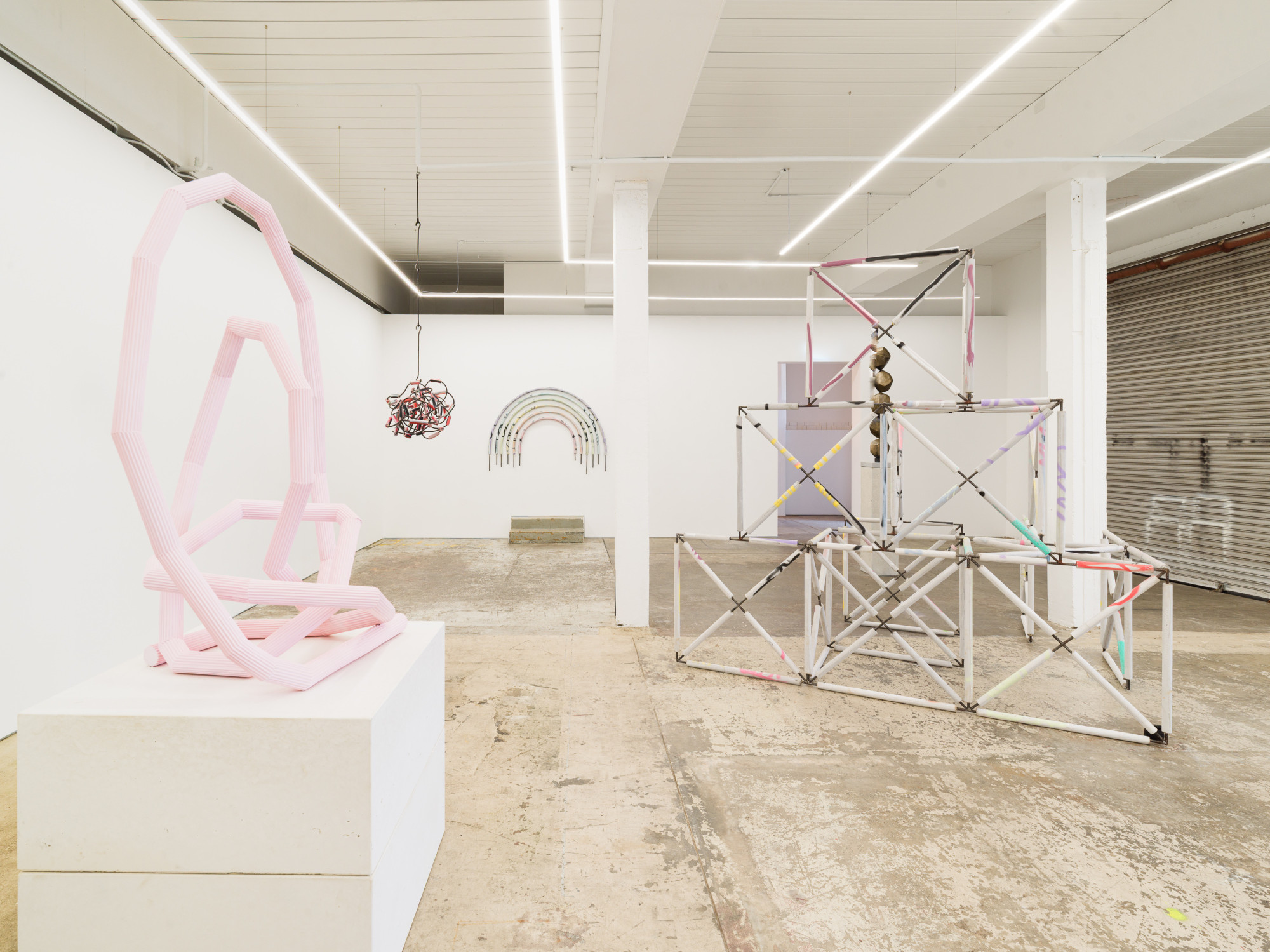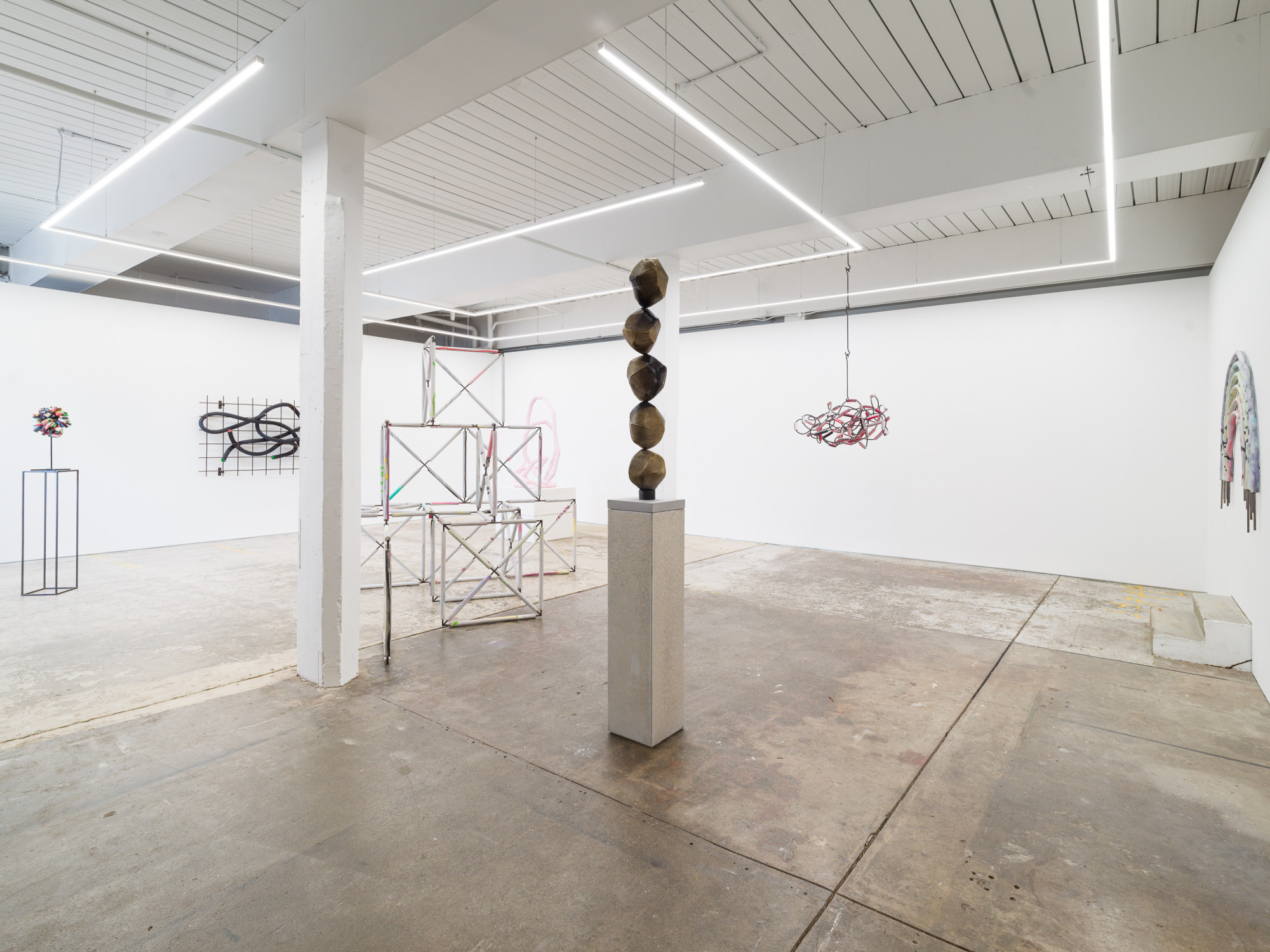
Eva Rothschild is a sculptor. Central to her work is in-depth material experimentation in the studio, and her work exists on every scale from the intimate to the monumental. Her work references history, such as the art movements of the 1960s and 1970s and the ancient world but is also informed by contemporary aesthetics. For example, the ‘love lock’ tradition that gained notoriety on Paris’s Pont des Arts, where couples attach padlocks to bridges as a symbol of their love. This device features in Modern Love, along with works made with a vast array of both traditional and new materials, including bronze, resin plaster, ceramic, rubber, steel, concrete, and paint.
Tribute (2024) emerged from experiments with casting concrete around steel rebar squares, initially flat but naturally progressing to three-dimensional forms. Modularity is a consistent interest that runs throughout Eva’s practice, with sculptures that accumulate rather than exist as singular, complete entities. This sculpture was informed by a playground Rothschild made in east London and the familiar geometry of the pyramids — forms both fundamental and mystical, historically significant yet often abandoned. Eva’s work draws parallels between contemporary structures and ancient ruins, evoking a sense of the incomplete or the forgotten, of architecture that has moved beyond use. The works suggest a possibility for addition or subtraction. They are episodic and open-ended suggesting that change is always possible.
The casting and accumulation of everyday objects such as bottles, cans and rolls of tape take a New Romantic turn in Heartbreaker (2025) where cast rubber padlocks coalesce around a support. Wholly constructed of these recently symbolic objects, the mass of individual locks both forms and obscures an almost-head, creating a tension between the construction and the erasure of the form.
Like the infinite scalability of the modular works, Madonna (2024) explores the idea of a continuous line that has the potential to extend indefinitely. The work originates from experiments with corrugated card, initially used to mimic large classical columns before evolving into slimmer, more gestural forms. In Madonna, the line defines space in a way that is both fluid and disrupted, wrapping around itself in a manner that evokes the mother-and-child relationship found in classical sculpture. The density of the corrugation within the line creates a visual complexity, compelling the eye to follow without ever finding closure. These lines do not loop, meaning they never truly end. The colour subverts traditional expectations of sculpture with a softness that contrasts its structural rigor.
Influenced by the recent commission of two enormous tapestries for Sadler’s Wells East in London, Tapestry (2024) reinterprets traditional weaving on an entirely different scale, using unconventional materials that challenge expectations. While soft fibres typically define tapestry, Eva sought a more substantial alternative, turning to steel grids and extruded rubber as a readymade warp and weft to transform an industrial framework into woven sculpture.
Pioneers (2024) is located within a series — an anti-statue, or a no-face statue, where heads exist without bodies. This absence challenges traditional representations of personhood, offering an ambiguous yet compelling presence. The inherent tension in these forms, the sense that they could topple at any moment, embodies the dynamic essence of sculpture. Unlike conventional ceramics, the pieces are constructed by folding and wrapping around empty space rather than being carved or modelled. This method draws a parallel to Tapestry, where a single line creates an entire surface. As the first of its kind made in ceramic, Pioneers evokes the fragility of wrapped heads — forms that appear as though they could unravel at any moment.
Rainbow (2024) explores the challenge of using a universally recognizable symbol that is deeply embedded with cultural and political meanings. While the desire to create a rainbow feels simple and ordinary, its associations make it difficult to present as a neutral or empty form. The work acquires the qualities of an archaic urban structure, evoking both nostalgia and grandiosity — ideas that resonate throughout the entire exhibition.
Introvert (2024) is one of several works in a series that challenge the inherent nature of materials, particularly steel rebar. The process and resulting work is paradoxical: a rigid, structural material is transformed into something light, tangled and seemingly malleable. The works can be placed at any height or orientation and hover on the edge of organised chaos.
Throughout the exhibition, this sense of material confusion recurs: ceramics appear like bronze, while steel loses its usual order and strength. These works seduce us into the world of materials, their presence in the world, often overlooked in contemporary life.
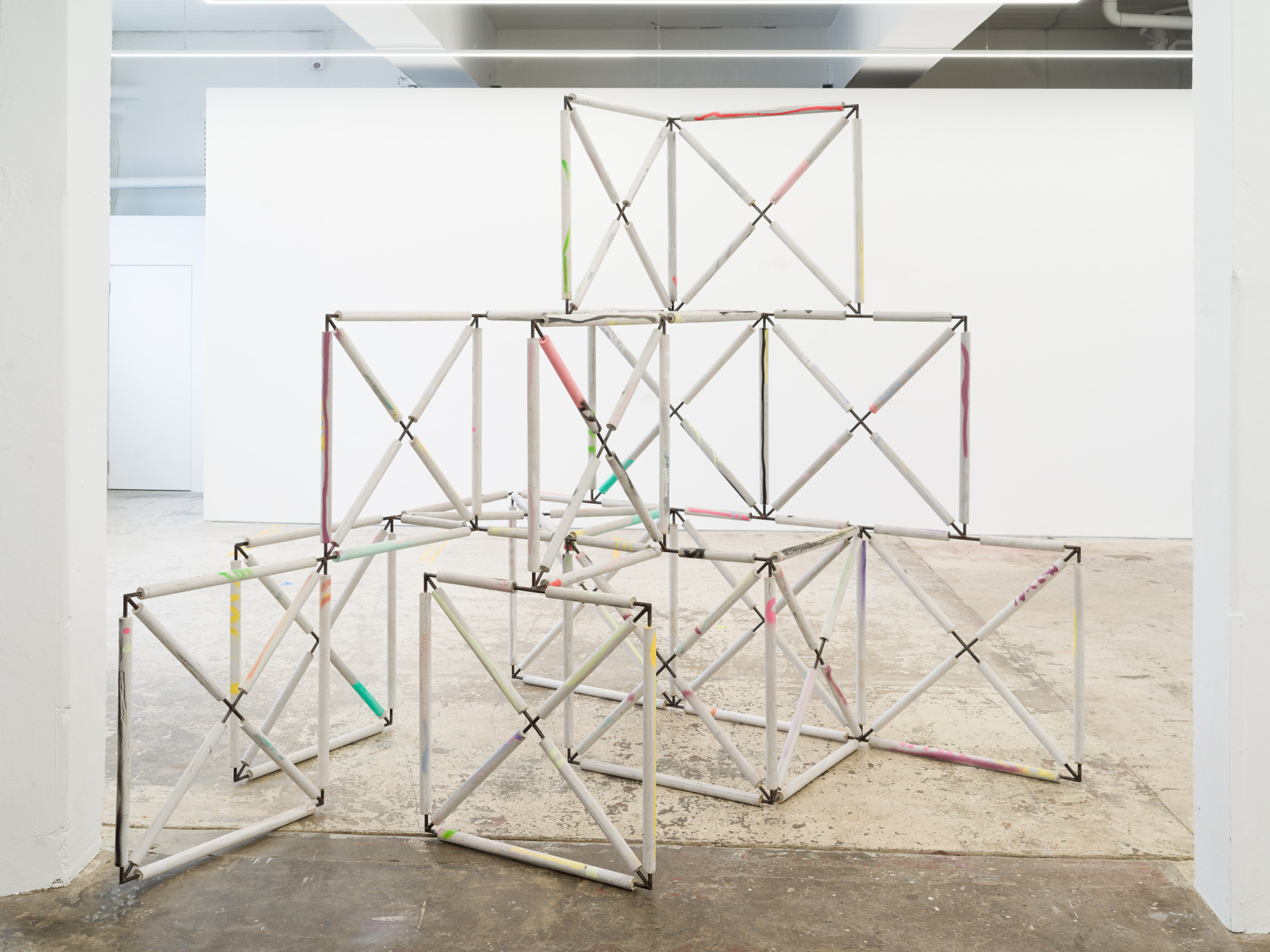
2024
Steel, resin plaster, rubber, paint
258 x 258 x 558 cm
Installation view, PALAS, Sydney
Photo: Josh Raymond
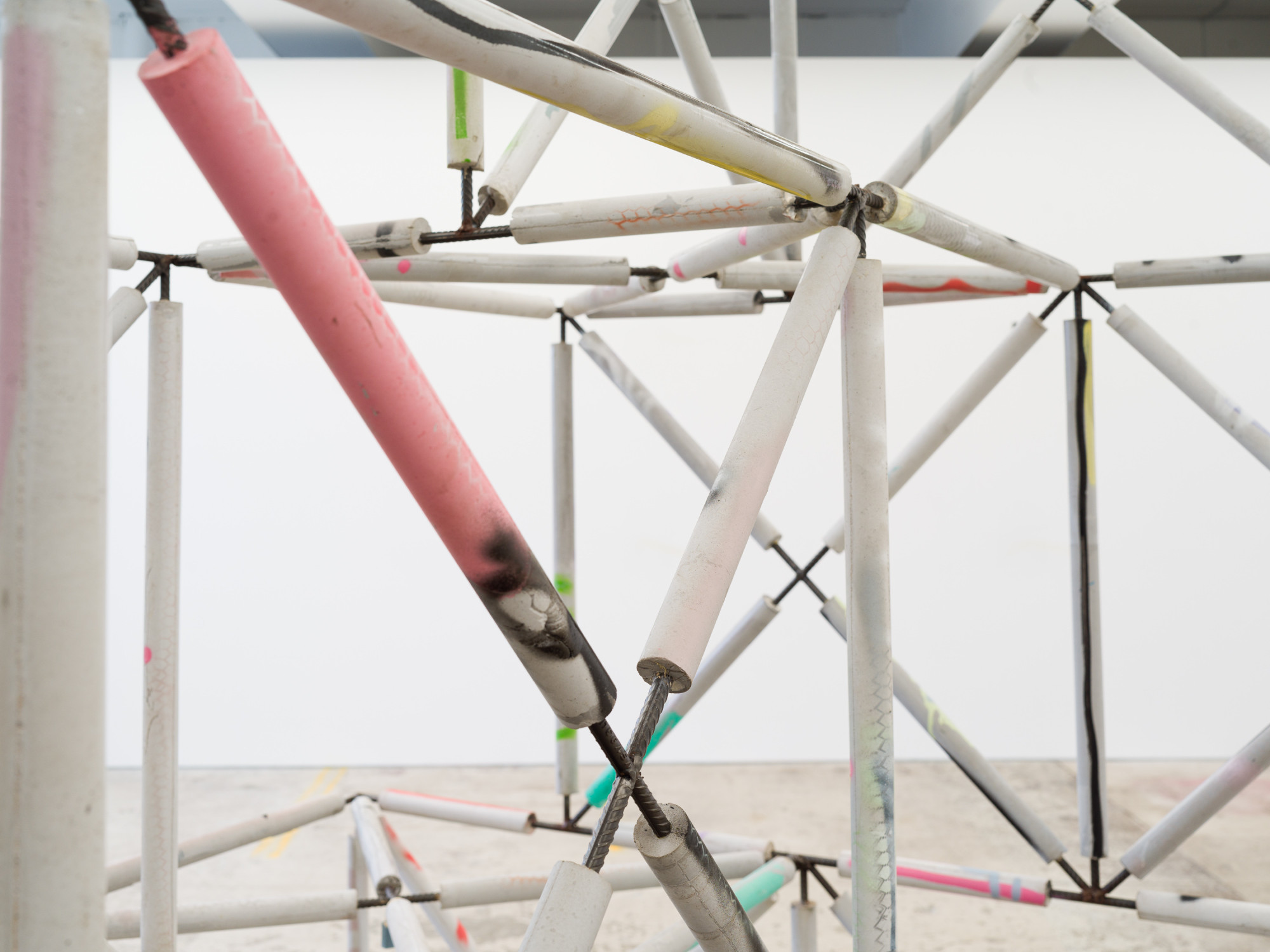
2024
(detail) Steel, resin plaster, rubber, paint
258 x 258 x 558 cm
Photo: Josh Raymond
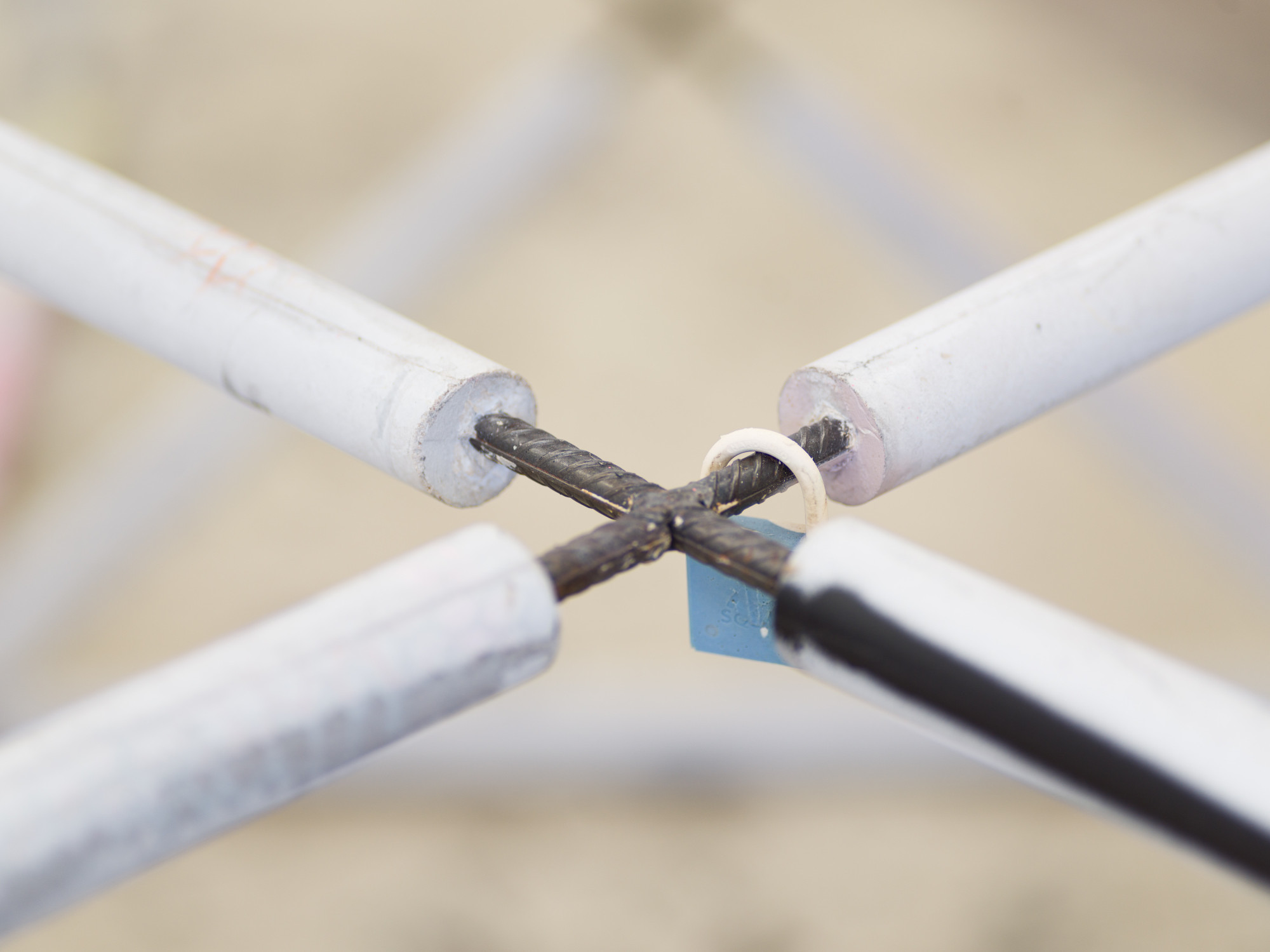
2024
(detail) Steel, resin plaster, rubber, paint
258 x 258 x 558 cm
Photo: Josh Raymond

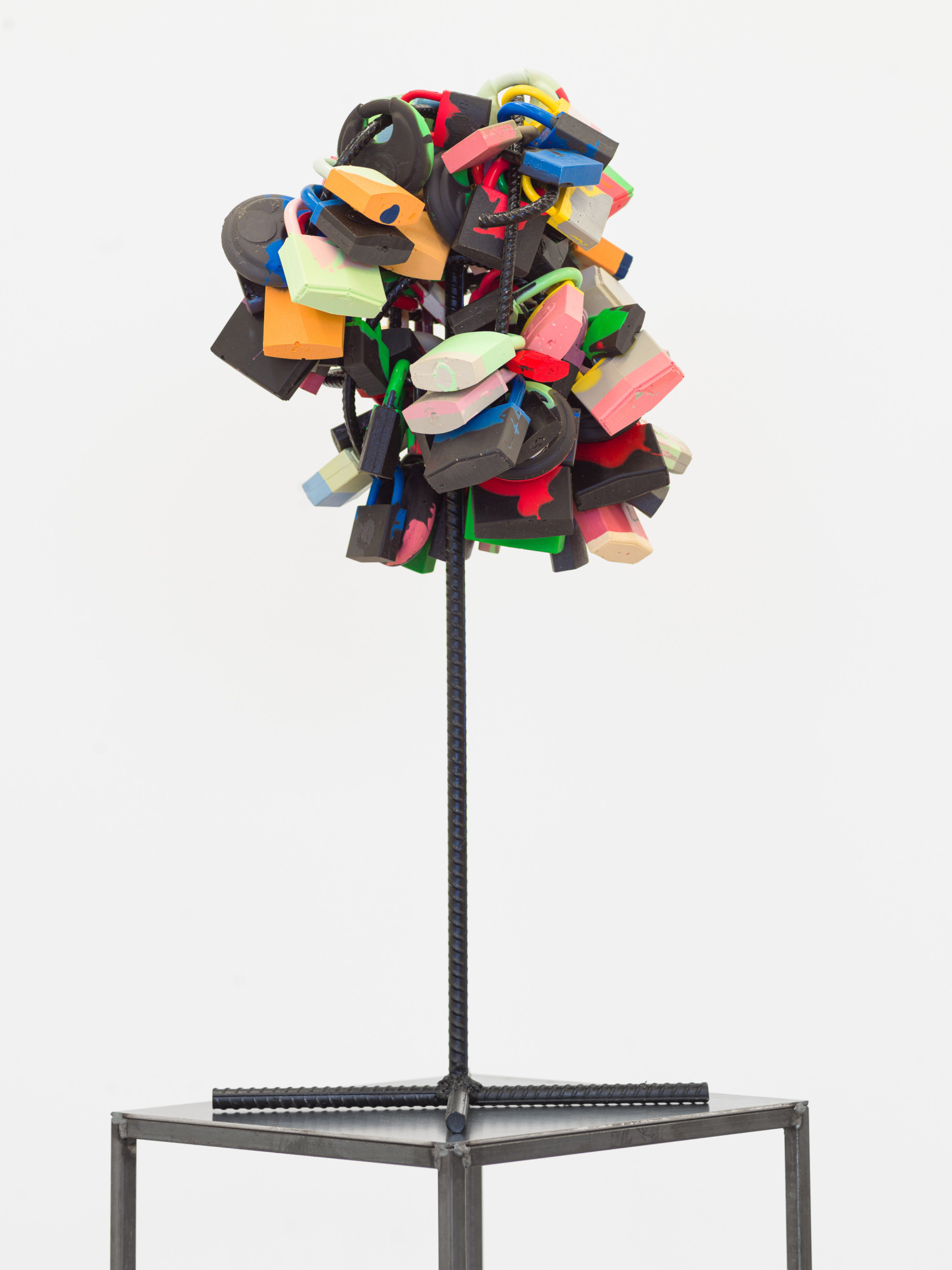
2025
Rubber, painted steel
67 x 30 x 30 cm
Photo: Josh Raymond
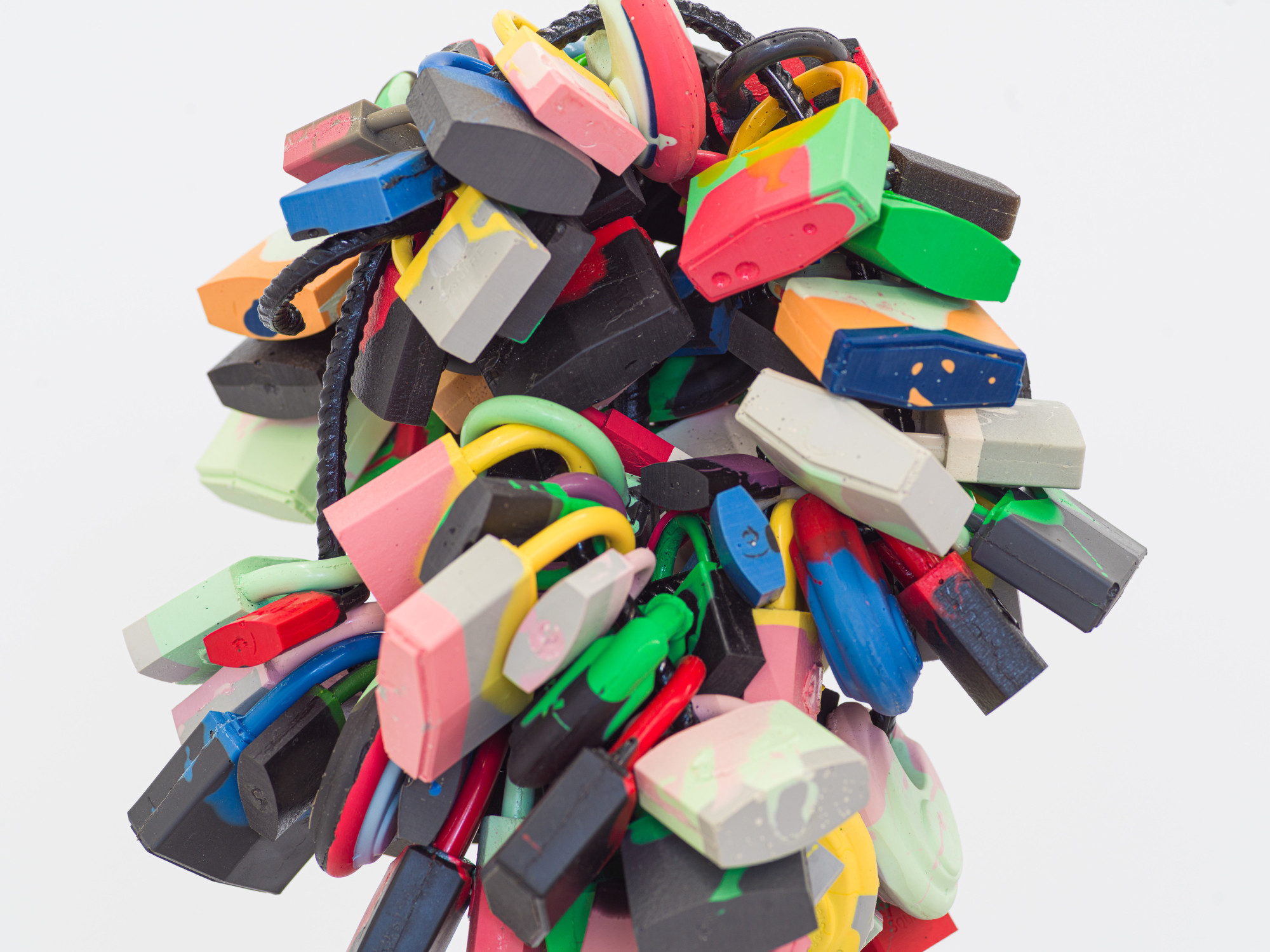
2025
(detail) Rubber, painted steel
67 x 30 x 30 cm
Photo: Josh Raymond

2024
Painted bronze, reinforced concrete plinth
sculpture: 150 x 90 x 90 cm
plinth: 90 x 90 x 80 cm
Installation view, PALAS, Sydney
Photo: Josh Raymond
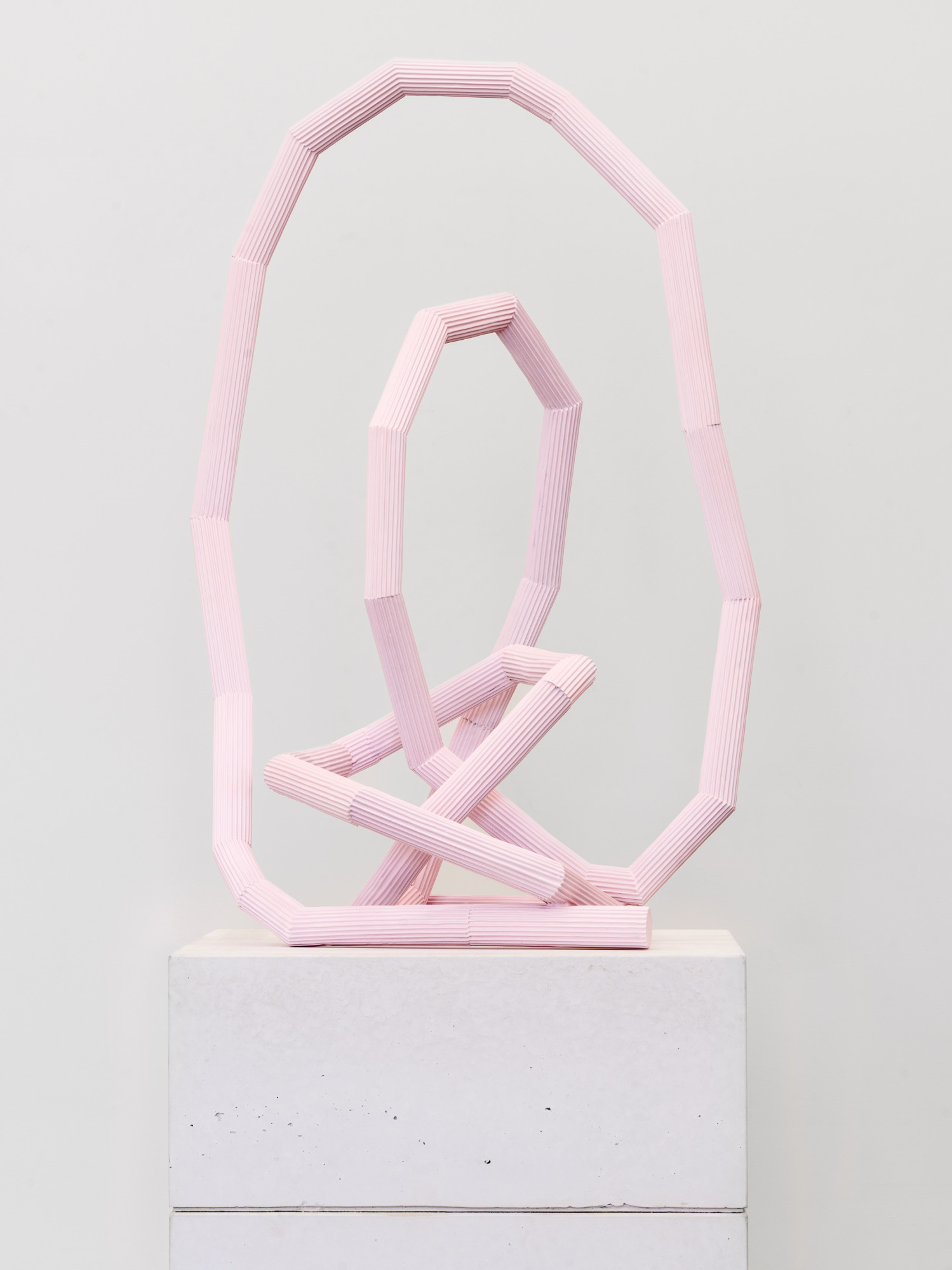
2024
Painted bronze, reinforced concrete plinth
sculpture: 150 x 90 x 90 cm
plinth: 90 x 90 x 80 cm
Photo: Josh Raymond
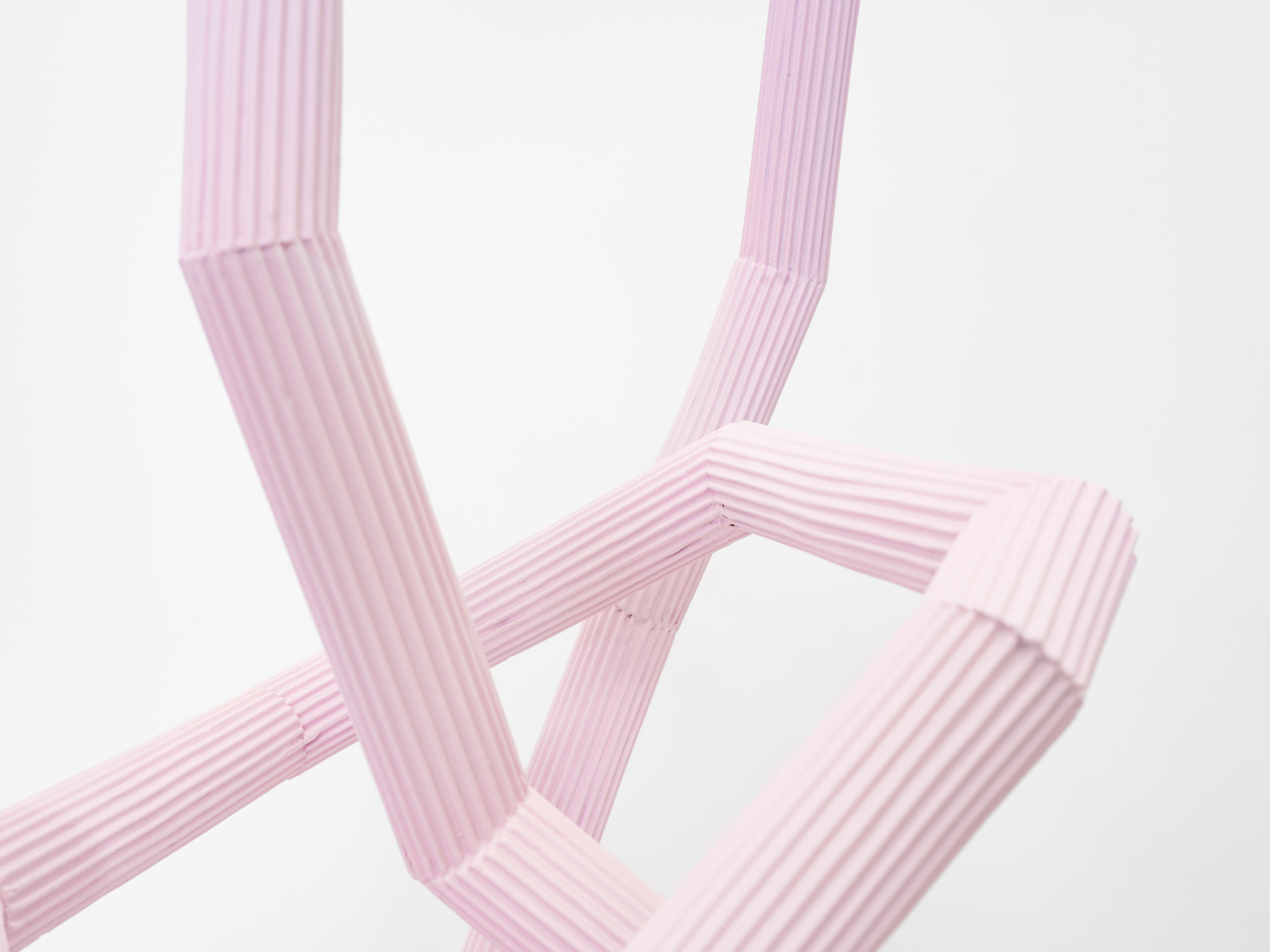
2024
(detail) Painted bronze, reinforced concrete plinth
sculpture: 150 x 90 x 90 cm
plinth: 90 x 90 x 80 cm
Photo: Josh Raymond
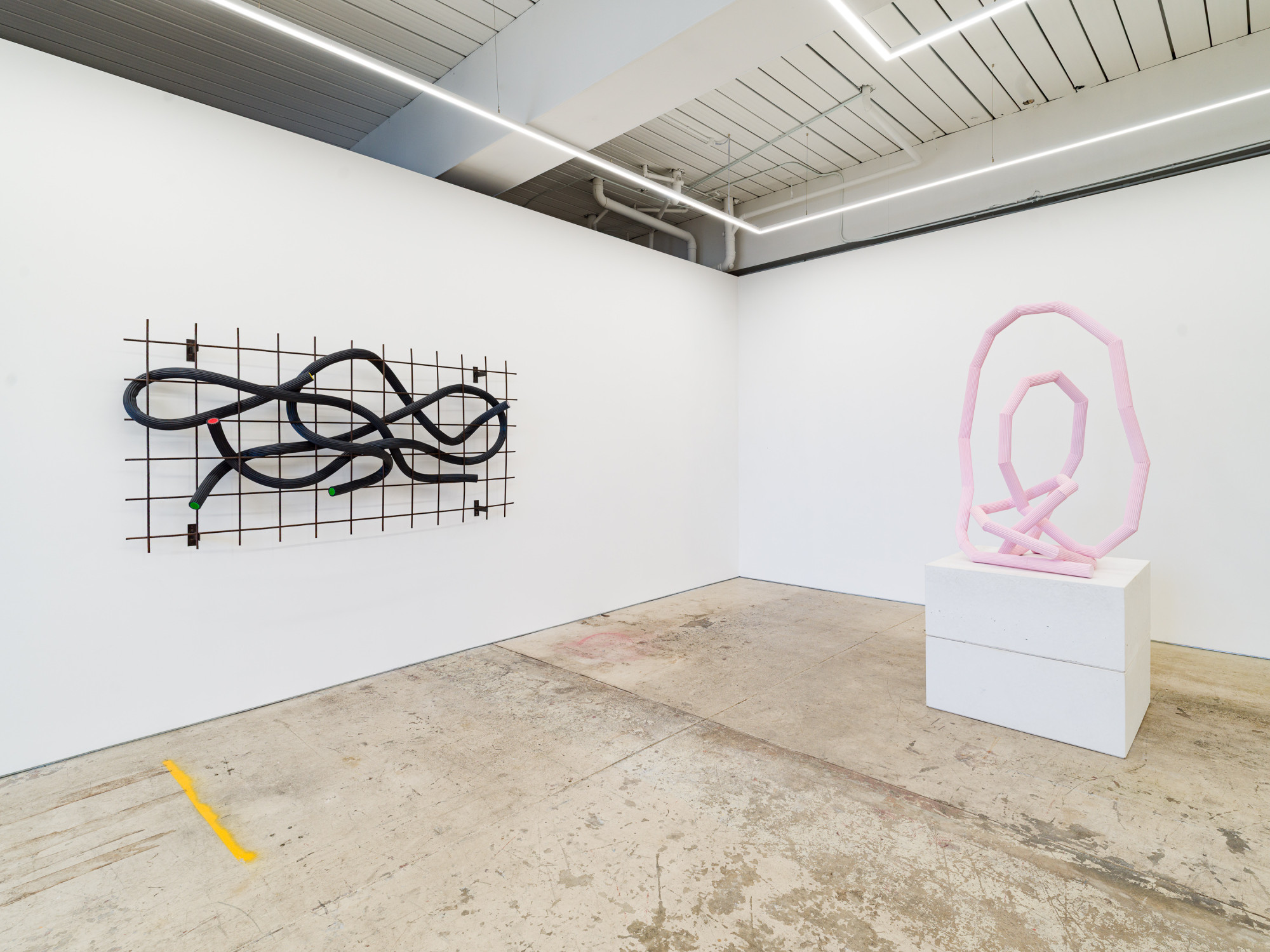

2024
Rubber, resin plaster, steel
120 x 240 x 30 cm

2024
(detail) Rubber, resin plaster, steel
120 x 240 x 30 cm
Photo: Josh Raymond
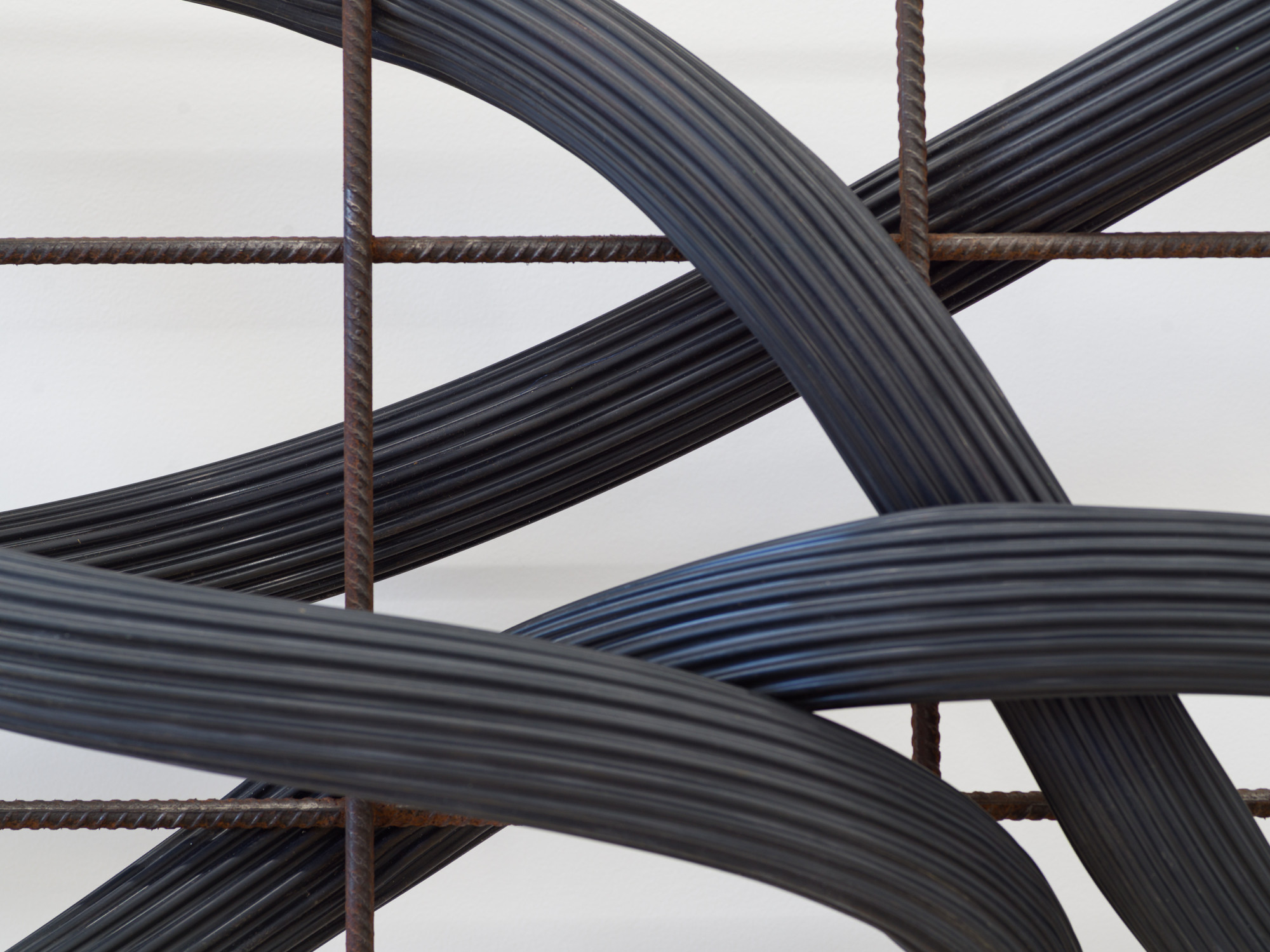
2024
Rubber, resin plaster, steel
120 x 240 x 30 cm
Photo: Josh Raymond
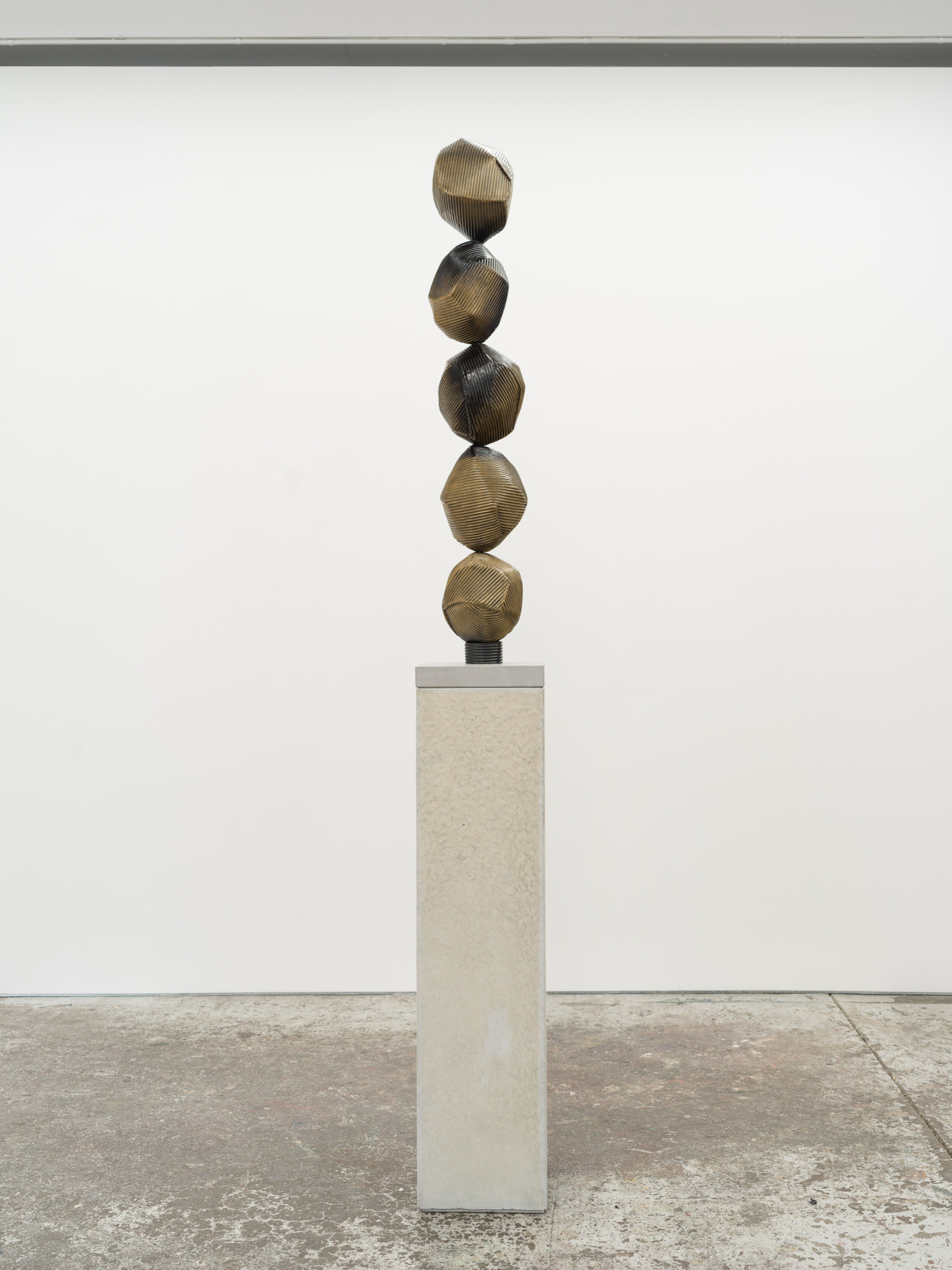
2024
Glazed ceramic, paint. steel support
sculpture: 137 x 30 x 30 cm
plinth: 120 x 30 x 30 cm
Installation view, PALAS, Sydney
Photo: Josh Raymond
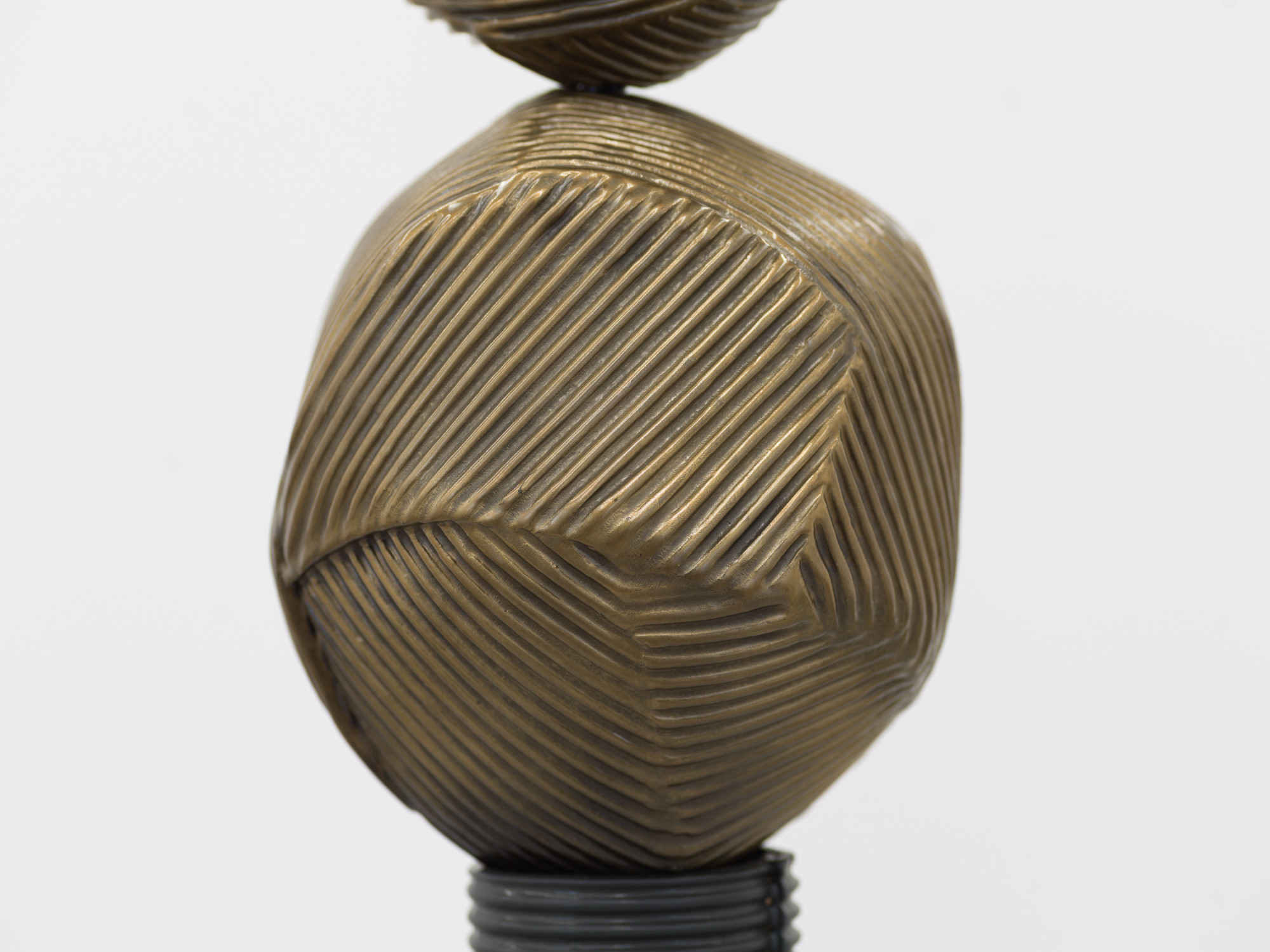
2024
(detail) Glazed ceramic, paint. steel support
sculpture: 137 x 30 x 30 cm
plinth: 120 x 30 x 30 cm
Photo: Josh Raymond
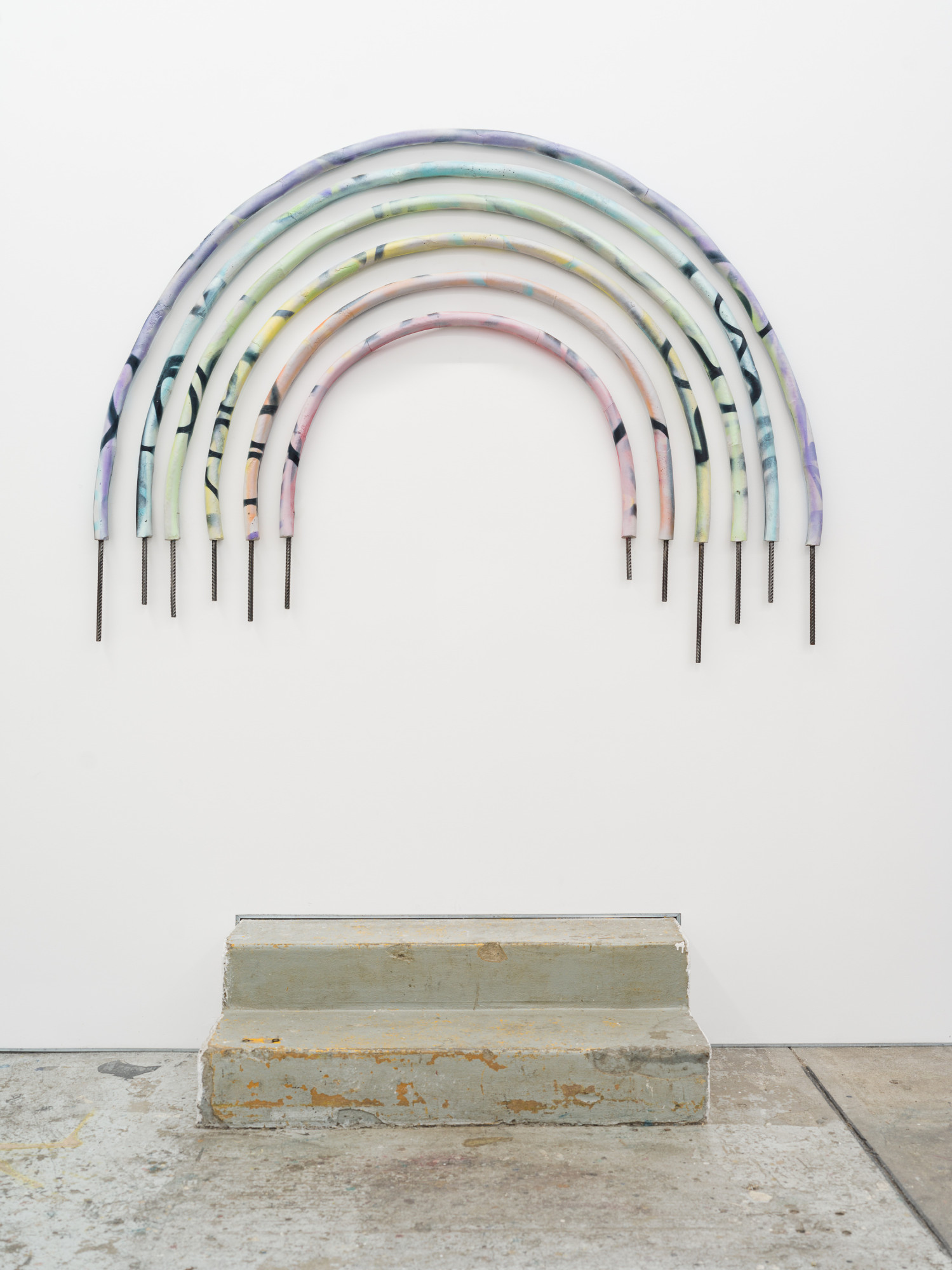
2024
Steel, resin plaster, paint
133 x 180 x 5 cm
Installation view, PALAS, Sydney
Photo: Josh Raymond

2024
Steel, resin plaster, paint
133 x 180 x 5 cm
Photo: Josh Raymond

2024
(detail) Steel, resin plaster, paint
133 x 180 x 5 cm
Photo: Josh Raymond

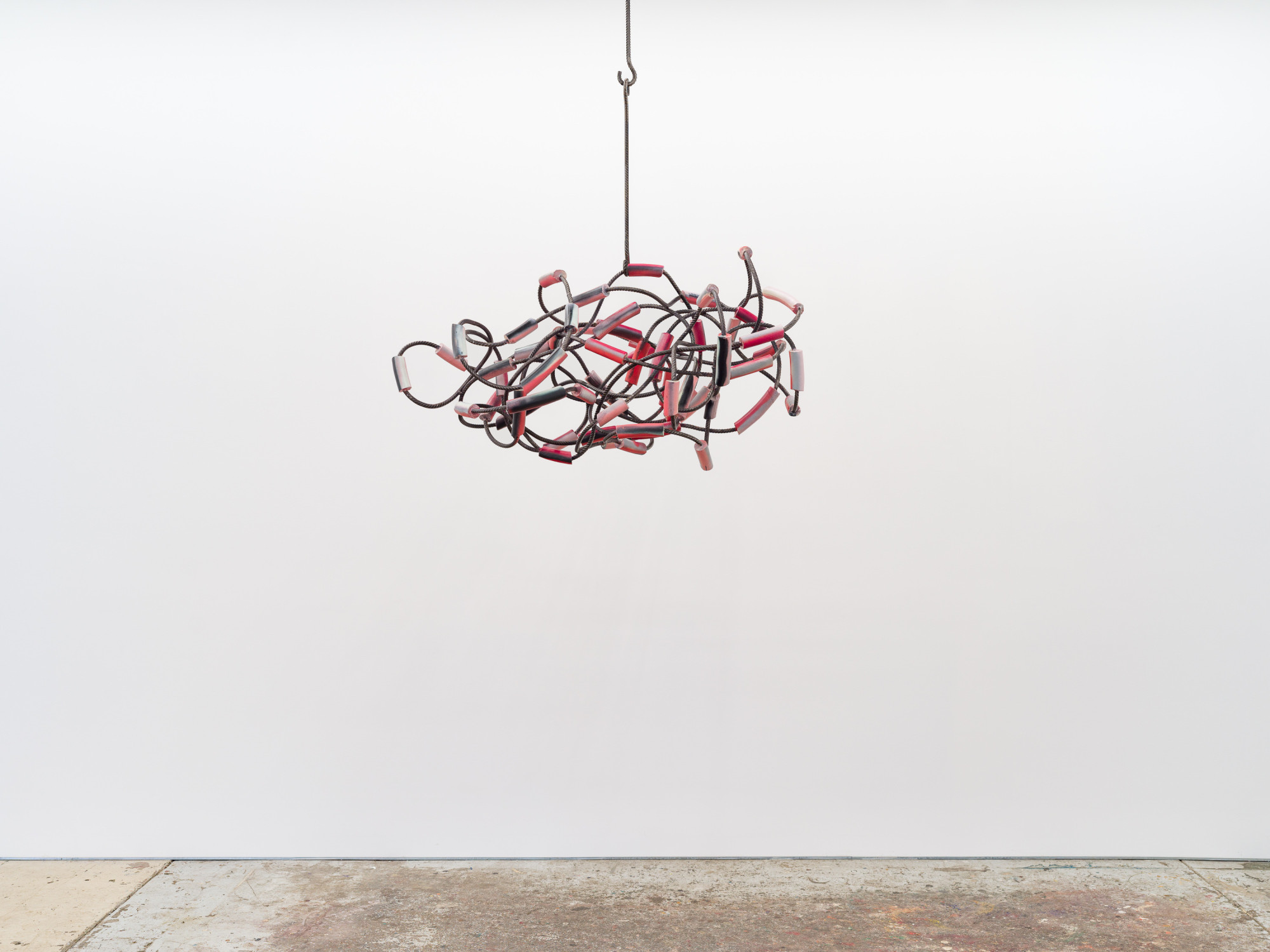
2024
Steel, resin plaster, paint
63 x 132 x 70 cm
Installation view, PALAS, Sydney
Photo: Josh Raymond
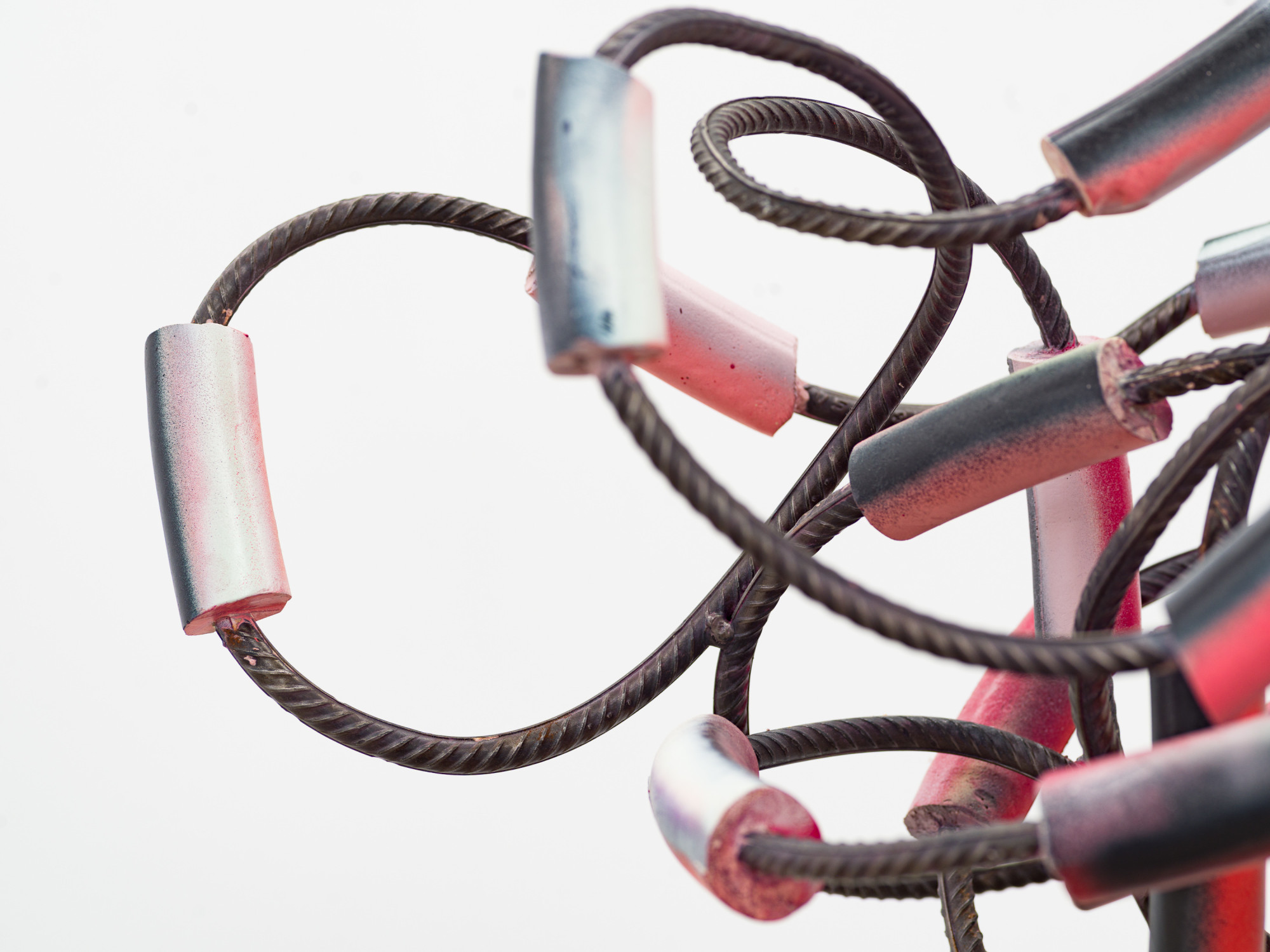
2024
(detail) Steel, resin plaster, paint
63 x 132 x 70 cm
Photo: Josh Raymond
